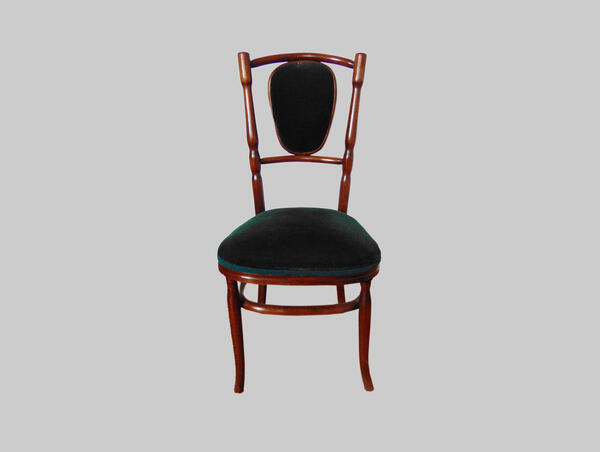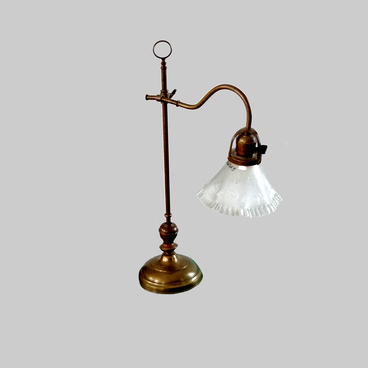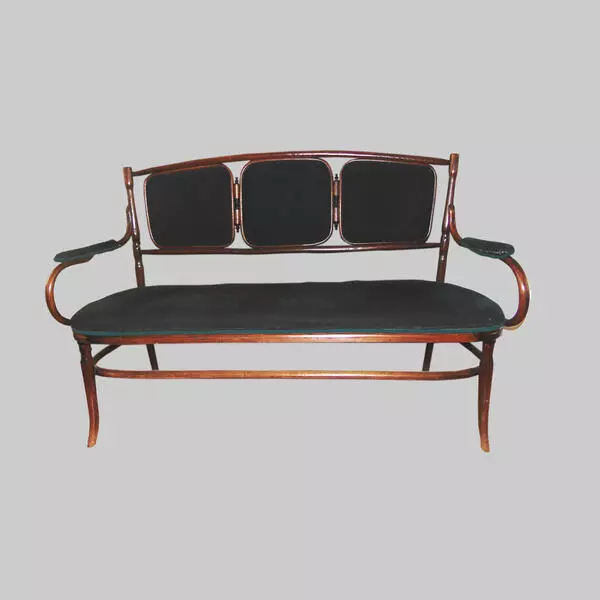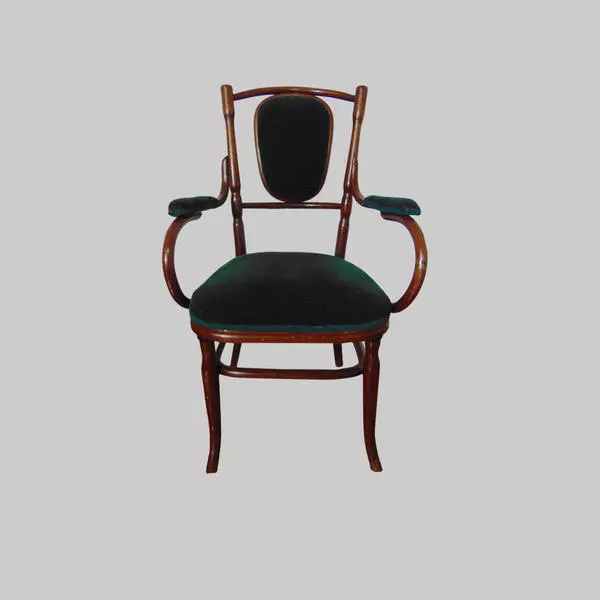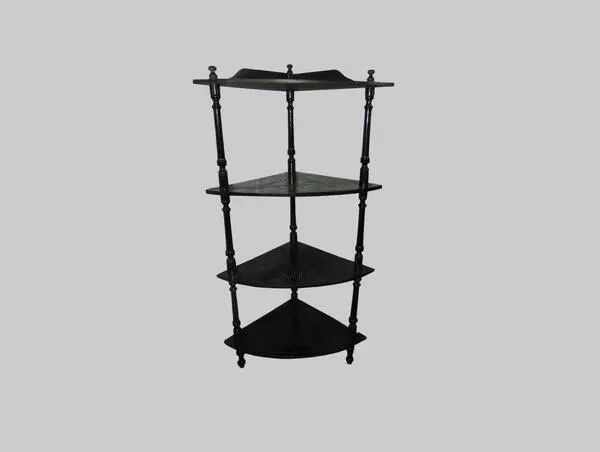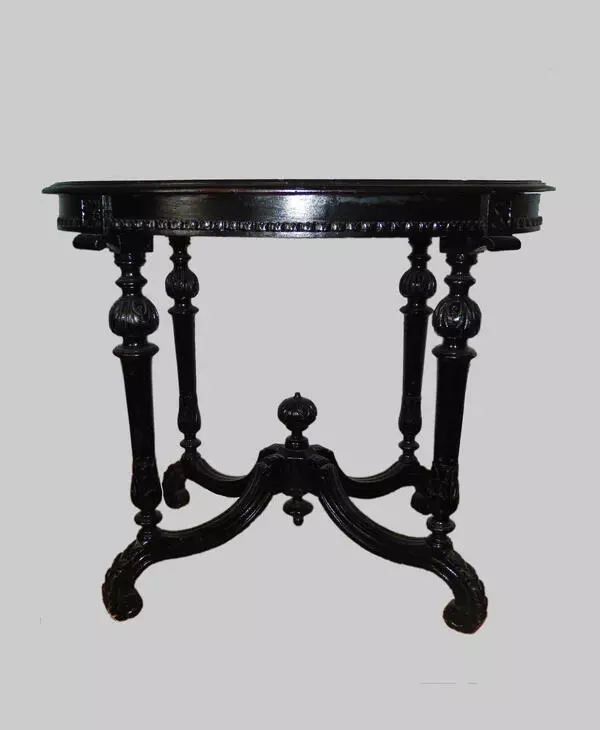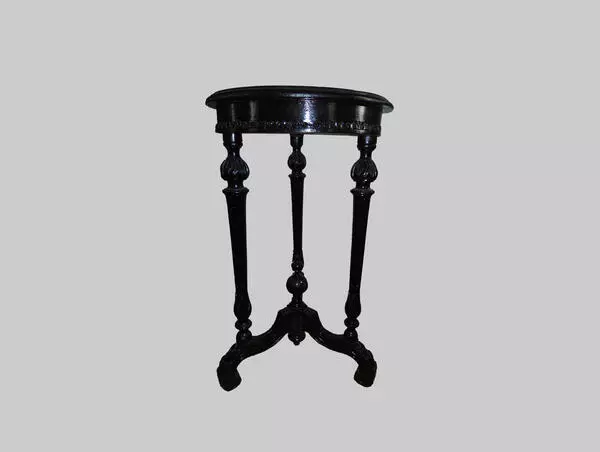In the second half of the 19th century, the entire world was conquered by Viennese furniture. Heavy, impossible to dismantle furniture, made of solid pieces of wood, was replaced by light and airy, yet strong and reliable products made of bent wood. Outstanding examples of Viennese furniture include the chairs presented in the ‘Large sitting room’.
These elegant chairs were made in the early 20th century in one of the factories of Michael Thonet – German and Austrian master cabinetmaker, furniture designer and, as he is often called today, ‘the father of industrial design’. Such a flattering name was not given to him by chance. In the middle of the 19th century, Thonet started his own production in Vienna. There he experimented with manufacturing furniture from hard beech wood, treated with steam or boiled water, which allowed to bend it into rounded shapes. In 1850, he first presented the chair, which would later become one of the symbols of the Thonet company and receive the universally recognized status of a masterpiece of decorative and applied art. These are the chairs, presented in the ‘Large sitting room’.
However, Thonet’s accomplishments are related not so much to furniture design as to its structure and production features. Series production of chairs, simply named “Chair 14” in the factory documents, began in 1859. They were assembled from 6 parts, which made production and transportation much easier. The parts of these chairs were fastened with screws rather than glue, which meant that they were easy to repair and could also be transported from place to place. Also such a design allowed to open many remote factories, which assembled products from the already finished parts.
By the end of the 19th century, the “Thonet Brothers” firm had two factories of its own on the territory of the Russian Empire, and the company distributed its products via its own warehouses and stores in Moscow, St. Petersburg, Odessa, Kiev and Nizhny Novgorod. This is also why Michael Thonet’s products have become so widely popular in Russia, especially among the bourgeoisie and nobility. Subsequently, the Thonet brand became a household name: all the elegant airy furniture was called Thonet style furniture.
These elegant chairs were made in the early 20th century in one of the factories of Michael Thonet – German and Austrian master cabinetmaker, furniture designer and, as he is often called today, ‘the father of industrial design’. Such a flattering name was not given to him by chance. In the middle of the 19th century, Thonet started his own production in Vienna. There he experimented with manufacturing furniture from hard beech wood, treated with steam or boiled water, which allowed to bend it into rounded shapes. In 1850, he first presented the chair, which would later become one of the symbols of the Thonet company and receive the universally recognized status of a masterpiece of decorative and applied art. These are the chairs, presented in the ‘Large sitting room’.
However, Thonet’s accomplishments are related not so much to furniture design as to its structure and production features. Series production of chairs, simply named “Chair 14” in the factory documents, began in 1859. They were assembled from 6 parts, which made production and transportation much easier. The parts of these chairs were fastened with screws rather than glue, which meant that they were easy to repair and could also be transported from place to place. Also such a design allowed to open many remote factories, which assembled products from the already finished parts.
By the end of the 19th century, the “Thonet Brothers” firm had two factories of its own on the territory of the Russian Empire, and the company distributed its products via its own warehouses and stores in Moscow, St. Petersburg, Odessa, Kiev and Nizhny Novgorod. This is also why Michael Thonet’s products have become so widely popular in Russia, especially among the bourgeoisie and nobility. Subsequently, the Thonet brand became a household name: all the elegant airy furniture was called Thonet style furniture.

